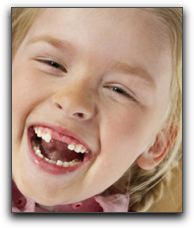Burlington parents may be surprised by the American Dental Association’s recommendations on infant oral care. Parents are advised to begin brushing their baby’s teeth as soon as their first teeth emerge. After all, brand-new teeth are just as vulnerable to cavities as older teeth. Starting Good Habits Early Parents are encouraged to use a cloth…
Blog
Dentistry for Kids in Crestview Hills: Soda Spells Double Trouble

Soft drinks, soda, pop. No matter what you call it, it seems to currently be the dietary villain of choice. Sadly, many residents of Kentucky still choose to drink it. Today, we are going to give you yet another important reason to avoid this harmful drinks. The Dangers of Acidic Drinks For children’s dental health,…
Pediatric Dentistry in Crestview Hills: Super Smiles For Life

Your child should be naturally proud of his or her smile. It expresses joy, laughter, and fun! To make sure your child has a healthy and attractive smile, start early. Preparing for Pediatric Dentistry in Crestview Hills Our team recommends a child’s first dental visit when their first tooth erupts. An early check is the first…
Kids Who Like Dental Visits?

At Pediatric Dental Center, we are proud of the fact that the majority of our young patients enjoy visiting our office for their checkups, cleanings, and treatments. We believe that creating a relationship with an experienced, friendly dentist in Burlington is an integral responsibility for parents. The Oral Health & Physical Health Connection Optimal physical…
Dentistry for Children in Burlington: We Love Keeping Kids’ Smiles Healthy

You may not know this, but your child’s dental health effects their overall health. At Pediatric Dental Center, we love working with you and your children to ensure a healthy smile for life. Why? Because we understand that the health of your child’s teeth and gums impacts their speech development, eating habits, and future health.…
Online Forms for Waiting Room Ease!
Moms, dads or caregivers bringing your children to our office for dental appointments: Due to HIPAA regulations, and for the most up-to-date information about your children, it’s required that the patient forms be filled out prior to the appointment time. To fill out the form when it is most convenient time for you, please download…
Online Forms for Waiting Room Ease
Moms, dads or caregivers bringing your children to our office for dental appointments: Due to HIPAA regulations, and for the most up-to-date information about your children, it’s required that the patient forms be filled out prior to the appointment time. To fill out the form when it is most convenient time for you, please download…
Frequently Asked Questions about Baby’s First Teeth
When will my Baby’s Teeth Erupt, and how should I take care of these primary teeth? Parents wondering how many teeth their children should have is a common question received at Pediatric Dental Center. We are going to fill-in those missing gaps, and answer your “toothy” questions. Newborns are not born with pearly white smiles.…
Seal out Tooth Decay with Sealants
What are dental sealants? A sealant is a clear or shaded plastic material that is applied to the chewing surfaces (grooves) of the back teeth also called molars. Sealants are important and recommended to avoid tooth decay because the sealant forms a protective shield over the enamel of the tooth. Why are sealants recommended? Because…
Tuesday Tip – Diet is One of the Main Risk Factors for Cavities
Important Tuesday Tip: Diet is one of the main risk factors for cavities, so we recommend the following nutritional advice: Help your child develop good eating habits. Limit snacking between meals and have a 5-10 minute time limit. Save sugary sweet treats for mealtime when the mouth creates more saliva to help rinse away food…

